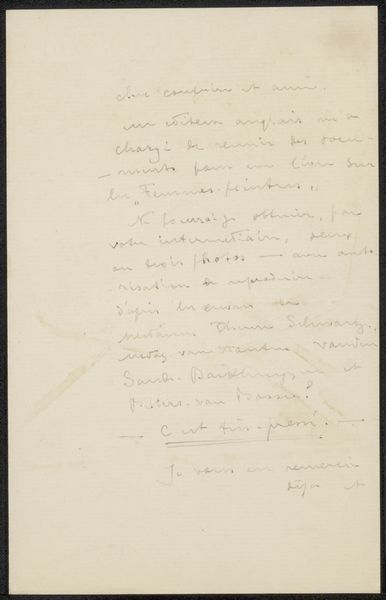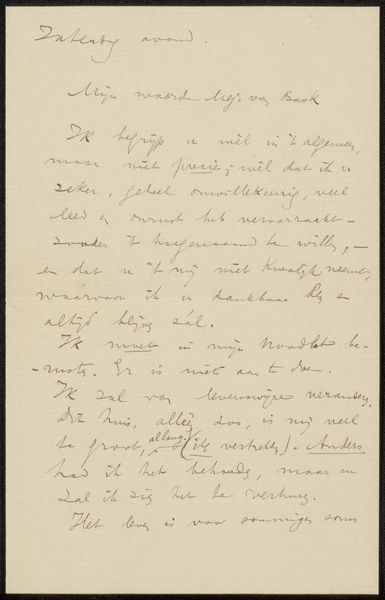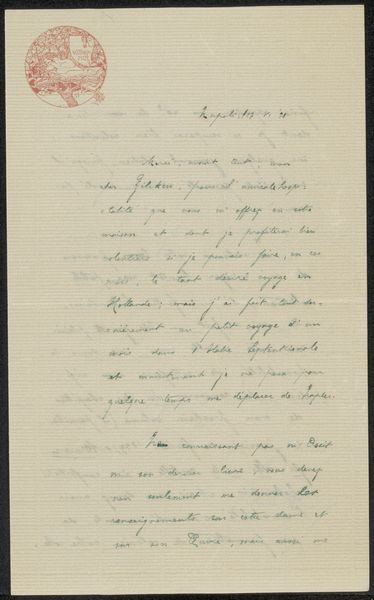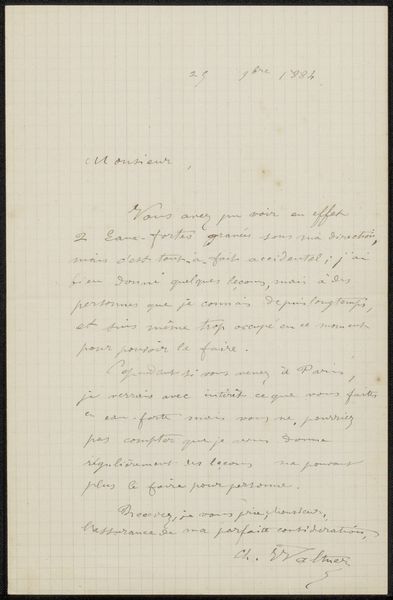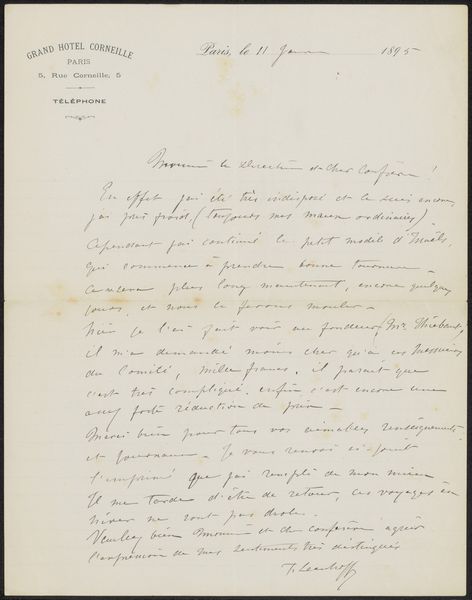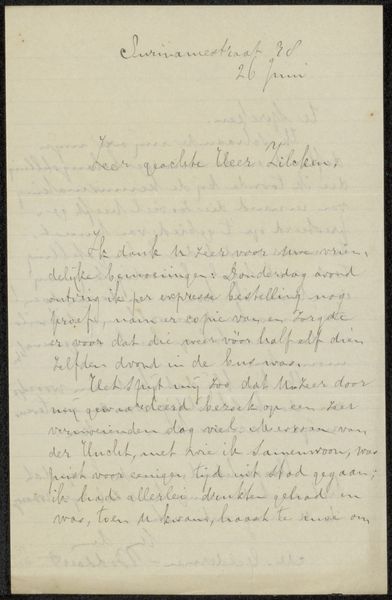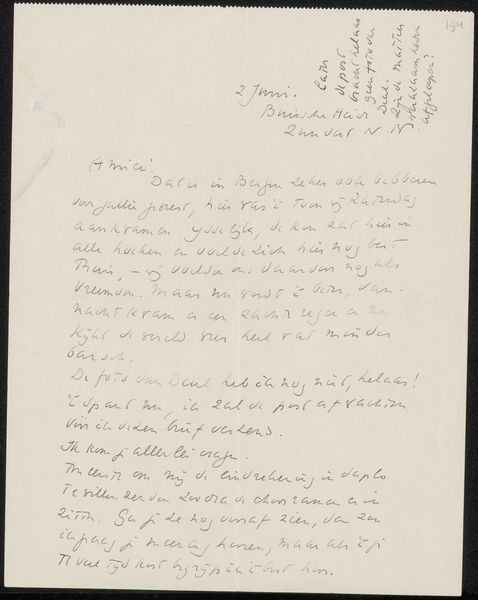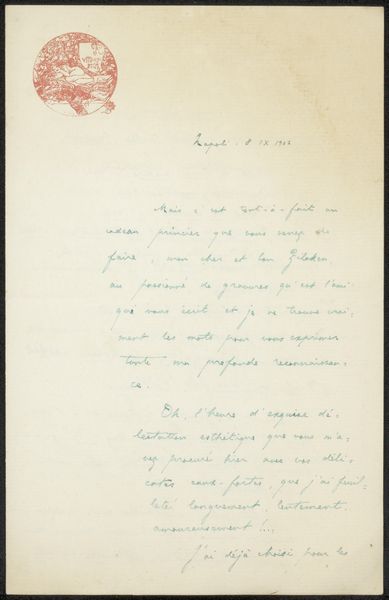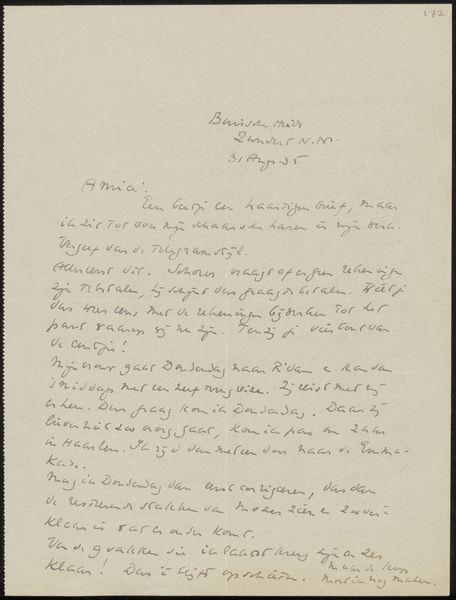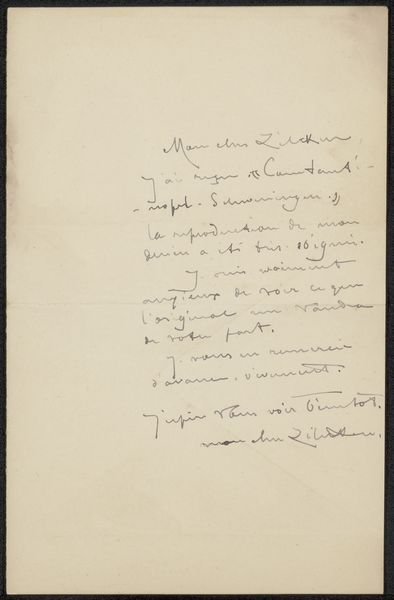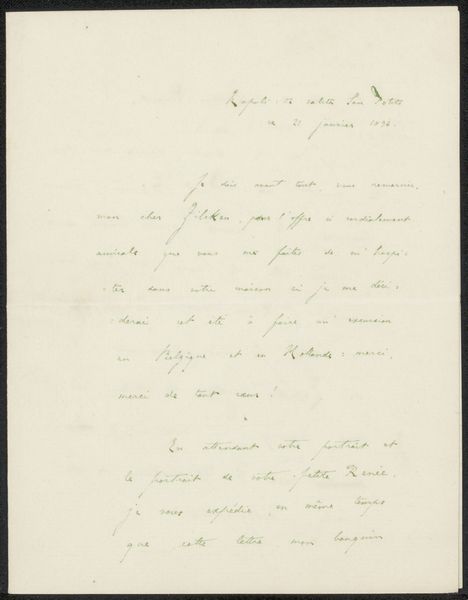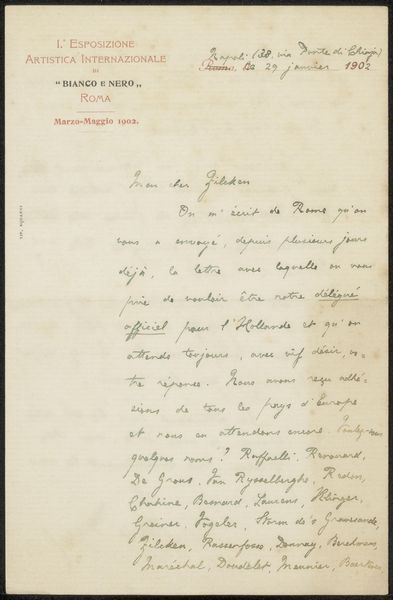
drawing, paper, ink
#
drawing
#
ink paper printed
#
paper
#
ink
#
calligraphy
#
monochrome
Copyright: Rijks Museum: Open Domain
Curator: Here we have a letter, titled “Brief aan Philip Zilcken,” likely written around 1904. It consists of ink on paper and provides an intimate glimpse into the correspondence of its time. Editor: The density of text is striking, it almost obscures the creamy paper underneath. Look how close those handwritten lines are packed together. It speaks of urgency and importance. What was at stake to create that energy? Curator: The letter reflects the intellectual and artistic circles Vittorio Pica moved within, referencing discussions and critiques—offering a window into his social network and how knowledge was produced and exchanged at the time. Editor: Absolutely, the letter’s materiality gives us clues. The handwriting, the specific ink, even the quality and source of the paper indicate the level of resources and personal investment. What labor went into the crafting and distribution of this physical object? Curator: Well, it speaks to the broader role of written correspondence in shaping artistic discourse. It wasn’t just about personal communication but about contributing to the construction of an artist's image and legacy within institutions and the public sphere. Editor: And how those power dynamics materialize—literally, are captured in ink. The hand controls the pen, guiding the discourse to reinforce Pica’s status in that cultural hierarchy. What kind of work would Zilcken complete upon receiving the letter? Curator: Precisely! Also consider how access to such correspondence has changed over time. We’re studying it here; once very private, now preserved, cataloged, and offered as material evidence to understand a vital past. Editor: Ultimately, a simple piece of paper covered in ink reveals more complex systems: how individuals communicated and negotiated their status, what processes defined artistic and intellectual exchanges, and which stories survive into posterity. Curator: Exactly. And how preserving and sharing it like this, opens to reconsiderations about accessibility, authority, and the evolving definition of historical significance. Editor: The materiality makes the past immediate, as if one can reach through time and affect it. A beautiful dance, really.
Comments
No comments
Be the first to comment and join the conversation on the ultimate creative platform.
